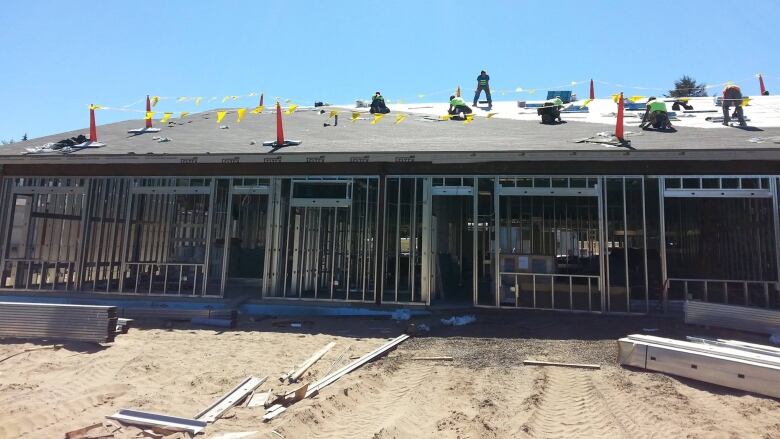Washington tsunami shelter offers protection for students, residents
First-ever publicly-funded tsunami shelter in North America being built in West Coast town

Surrounded by the Pacific Ocean on three sides, Westport, Wash., would not be a great place to be if a tsunami was barreling towards the West Coast.
If a major earthquake struck the Juan de Fuca fault line, the first waves would hit the town within 20 minutes.
But things are hopefully going to get a lot safer. Construction of the firstpublicly-funded tsunami shelter in North America is underway just south of the town at Ocosta Elementary School.
"Unfortunately, there is no high ground here," said Ocosta principal Heather Sweet. "If a major earthquake and a tsunami came, we would be covered in water."
In fact, the nearest high ground would be almost impossible to reach in the event of a tsunami, Sweet said. It would require either driving right along the coastlineto a hilly region to the south, or cross three bridges (which may be knocked down) to nearby Aberdeen.
- Japanese tsunami debris transponder sought on Vancouver Island
- Port Alberni chooses didgeridoo as new test sound for tsunami alarm system
- Japanese tsunami debris B.C. pickup pitched by Gulf of Alaska Keeper
For that reason, local officials are building the shelter, which can fit 1,000 people half the town's population in the school itself. The project comesat a cost of about $13 million.
Money stopped similar projects
The shelter is being built around the school's new gym. It consists of four massive stair towers built out of reinforced concrete that together provide strength and height to keep occupants safe from a tsunami's impact, and hopefully above the wave itself.
Sweet says the shelter's designers took the experiences of the 2011 Japanese earthquake as their guide for what would be necessary to keep students and residents safe.
"We were very fortunate that our community loves us so much to believe in this project," Sweet said.
Several other communities in Washington and Oregon have considered building similar structures to protect citizens, but ballot initiatives to increase taxes to pay for them have all failed.












_(720p).jpg)


 OFFICIAL HD MUSIC VIDEO.jpg)
.jpg)



























































































